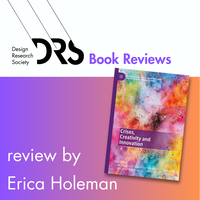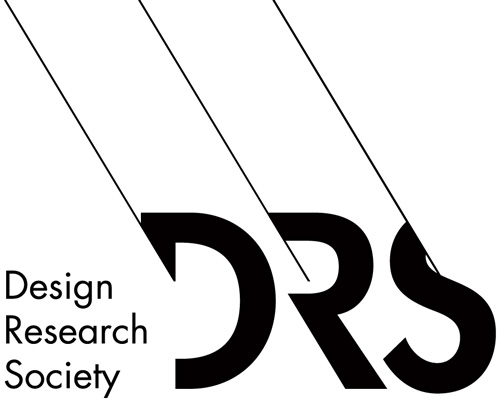
Book Details
Crises, Creativity and Innovation
Ed. Zorana Ivcevic, Roni Reiter-Palmon, Min Tang, Magdalena G. Grohman
Palgrave Macmillan Cham
2024
355 pp.
ISBN: 9783031617812
Crises, Creativity and Innovation is the latest in a series on organizational creativity and innovation edited by psychologist and professor Dr. Roni Reiter-Palmon. The series, Palgrave Studies in Creativity and Innovation in Organizations, is a platform for research into contemporary workplace concerns. In this new edition, Zorana Ivcevic, Min Tang, and Magdalena G. Grohman join Reiter-Palmon as editors to curate a new collection focused on creativity and innovation during crises. While the COVID-19 pandemic is a common topic in many chapters, the text clearly outlines how crises can and will manifest in many scales and forms. As such, the findings and questions raised throughout have far-reaching implications.
With twenty-five international contributors in its fourteen chapters, the book offers a range of perspectives, frameworks, empirical studies, and theories. The book begins by introducing its authors, scholars in psychology, education, and organizational behavior. The introduction includes a moment of optimism for the world and the power of creativity through a call for transformational creativity, described as creativity “combined with wisdom and noble intentions, contributing to positive, meaningful, and enduring differences to the world”. However, that optimism is not mirrored in all subsequent chapters. Some authors are pragmatic; others sound jaded. Because the book relies on empirical studies and frameworks, the tone largely targets researchers and academics. However, minor misspellings—and in one chapter a jarring use of profanity—diminish the text’s scholarship.
Crises, Creativity and Innovation is organized into three themes: theoretical models; crisis and its influence on education; and crisis and organizational or social creativity. The first section establishes important context. Authors define crisis and innovation while posing ethical questions and making a case for the social value of creativity. For example, chapter two outlines relationships between conflict, crisis, and creativity. It finds conflict tends to encourage creativity, though this depends on the scale of conflict and context of those impacted. At times pessimistic, chapter three examines societal and political changes of the past four decades through a lens of creativity. The author proposes it is irresponsible to praise all creativity. Instead, he urges we curate and celebrate examples of “creative quality.” This new criterion requires creative acts are made with integrity and intent toward a positive influence. The next chapter calls for sensitivity and inclusion while ideating solutions in a crisis. Case studies demonstrate how Possibility Spaces—the shift of focus from the present to awareness of future possibilities—translates into a methodology. The authors argue crisis itself may trigger an additional crisis of the imagination; that we must examine how narrow or widely we imagine possibilities as we ideate solutions. Where chapter four presents as a framework, five is formatted as questions and answers. Here the main theme isn’t how to ideate solutions, but how to find agency to do so in the first place. Altogether, this first section grounds the book. It establishes the importance of all the research to come while providing thorough definitions through multiple lenses.
The second theme, crisis and education, begins in chapter six which advocates for building uncertainty tolerance in students. After outlining their model, the authors propose research approaches and teaching methods to help students stay engaged with their education during a crisis. Chapter seven examines creativity’s ability to address emotions in classrooms. Specifically, how negative emotions caused by COVID-19 were avenues to creativity for students and teachers. The argument is that creativity helps students process emotions, build resilience, engage, and contribute to problem solving during crises. Chapter eight again addresses emotions and resiliency but notes the range of impacts across different societies and communities. Authors detail the meaning of resiliency, but the text is largely a case study of how an international art therapy program built empathy and enabled coping for students. The next chapter is an outlier within the educational theme as well as in the book itself. The author argues that the rampant spread of misinformation, including conspiracies, is its own crisis of dark creativity. Though a departure from previous chapters conceptually, it is a fascinating read filled with references and ideas for combating this crisis within a crisis.
Chapters ten through thirteen make up the book’s the third and final theme: crisis and organizational or social creativity. First is an overview of different models of leadership, especially those that encourage innovation. A synthesis of existing research identifies various styles of leadership and how styles differ when preparing for a crisis versus managing during a crisis. The next chapter investigates a crisis of globalization for previously overlooked small and flexible business models. Chapter twelve is more holistic, considering how crises force entities and individuals to accept a “new normal”. It argues that organizations make a multitude of contributions to society, communities, and economies. Finally, chapter thirteen provides case studies of social innovation during two crises in China (the 2013 Lushan earthquake and 2021 Zhengzhou flood). Both emergencies required collaboration, engagement, and flexibility while working within strict parameters.
The conclusion warns against oversimplifying connections between crisis, creativity, and innovation. Nuances in scale, social setting, leadership, resources, and even the meaning of “innovation” or “creativity” are too varied for a linear correlation. Instead, the authors compare the link to a map with branching routes to many potential neighboring outcomes. The book ends with calls for continued research and continued innovation. This in fact is a primary takeaway: much is left to study in the crossover of crisis and creativity.
After the enormous tragedy of the COVID-19 pandemic, many sought any small spark of humanity or sign of recovery. This book is one of those reassuring indicators of progress. For what better way to heal than to plan a way forward and learn from the trauma? With its wide range of perspectives and broad areas of knowledge, the book is itself evidence that we can emerge from crisis with reflection and rigorous scholarship.
Erica Holeman is an educator and award-winning graphic designer currently teaching at the University of North Texas. Her research focus is on empathy and play, asking how play might build healthier mental practices (and increase creativity) for professional and student designers alike. She holds a Master in Fine Arts in graphic design from Maryland Institute College of Art (MICA).
